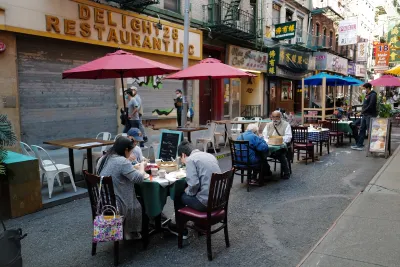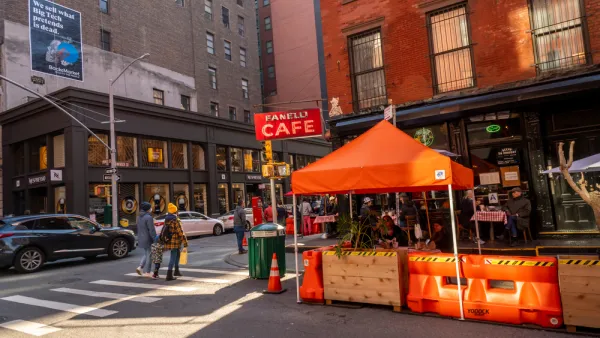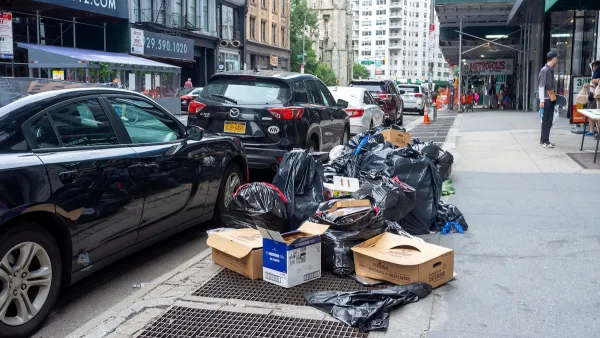Restaurant owners say the city’s new outdoor dining program makes it too difficult and expensive to operate al fresco setups.

Many of New York City’s outdoor dining structures are being removed to make way for (mostly free) parking after restaurants and bars failed to make them compliant with the city’s new requirements.
According to a report by Kevin Duggan in Streetsblog NYC, businesses with non-compliant designs had to take down their setups by November 1, while compliant businesses must remove them by November 29, since the outdoor dining program doesn’t apply in winter months. The new rules, which call for a public hearing for new outdoor dining applications, require that structures be easily removable and lightweight, banning fully enclosed hard structures.
Restaurant owners say the seasonal program makes operating an outdoor dining area more expensive since they must pay for removal and storage during the off-season, and many say they will stop offering outdoor dining altogether. “The numbers of sheds dropped significantly after the new regime first kicked in over the summer, with around 3,000 applications for roadway and sidewalk cafés as of late September, according to the Department of Transportation. Transportation officials estimate that the program peaked at 6,000 to 8,000 participants, including some 5,000 setups as of this summer.”
FULL STORY: Parking? Lots! Outdoor Dining Structures Are Coming Down Across the City

National Parks Layoffs Will Cause Communities to Lose Billions
Thousands of essential park workers were laid off this week, just before the busy spring break season.

Retro-silient?: America’s First “Eco-burb,” The Woodlands Turns 50
A master-planned community north of Houston offers lessons on green infrastructure and resilient design, but falls short of its founder’s lofty affordability and walkability goals.

Delivering for America Plan Will Downgrade Mail Service in at Least 49.5 Percent of Zip Codes
Republican and Democrat lawmakers criticize the plan for its disproportionate negative impact on rural communities.

Test News Post 1
This is a summary

Test News Headline 46
Test for the image on the front page.

Balancing Bombs and Butterflies: How the National Guard Protects a Rare Species
The National Guard at Fort Indiantown Gap uses GIS technology and land management strategies to balance military training with conservation efforts, ensuring the survival of the rare eastern regal fritillary butterfly.
Urban Design for Planners 1: Software Tools
This six-course series explores essential urban design concepts using open source software and equips planners with the tools they need to participate fully in the urban design process.
Planning for Universal Design
Learn the tools for implementing Universal Design in planning regulations.
EMC Planning Group, Inc.
Planetizen
Planetizen
Mpact (formerly Rail~Volution)
Great Falls Development Authority, Inc.
HUDs Office of Policy Development and Research
NYU Wagner Graduate School of Public Service





























